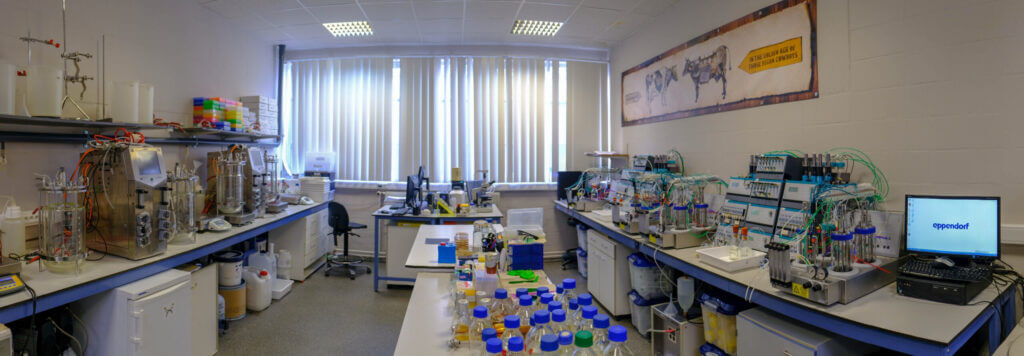
Pt 10: A lay of the land
Lots of you kind and curious folks have been wondering how this enterprise of ours works. We’ve been getting questions left and right, asking how those scientific sodbusters down at the lab go about their business on the road from fungus to feta, from yeast to yoghurt. Well, I’m just a humble scribe, and my ink-stained fingers ain’t never touched the shiny chrome of a fermentation vat, but I sat down by the campfire with Kathleen ‘The Sticky Belgian’ Piens one crisp autumn night as she patiently explained to me every detail of the operation. Being the Head of Downstream Processing, Kathleen possesses a unique overview of the many cogs that constitute this dairy-developing machine. She gave me a rundown of the different lab spaces, each with a purpose and personality as distinct and specialized as the good people working there, and now I’m sharing this rare glimpse with you, dear reader.
The Ranch
First off, let’s start with shedding some light on the micro-organisms that set this entire process in motion, and on the people who make them move in the direction we want them to; The Magnificent Seven. These molecular miracle-workers take copies of the genes that are present in a cow’s DNA, the genes which are responsible for the production of dairy proteins, and introduce them to a yeast or fungal strain. Such a little set of genetic code contains all the instructions an organism needs to build the proteins that will eventually become dairy. Now, I know what you might be thinking, but luckily in this day and age these genes don’t have to come from an actual cow any more. Knowing the exact code that constitutes such a gene allows us to have it synthesized, meaning that it’s stitched together one nucleobase at a time, and with no need to bother a breathin’ bovine. Once such a gene has been successfully implanted in the DNA of a micro-organism, the Magnificent Seven start cultivating the yeast or fungus in small amounts at The Ranch, in order to see if it starts producing the desired proteins. Like wild horses, some of these strains buck more than others when they’re being tamed, and it’s up to the Seven to see which are ready to be saddled up for a true test drive.
The Open Range
Once these strains are selected and saddle-broken in The Ranch they’re moved on to The Open Range, where our team of dedicated fermentation specialists takes them for a spin. Here they have a whole set of small fermentation vats in which promising strains can be grown under the circumstances that they love best. Whether it’s down to temperature, the amount of oxygen they receive, or how often they like to be fed, all these strains have their own specific wants and needs.

Our people at the Open Range develop a process to make sure those needs are met, and continue to test the performance and robustness of these strains on a slightly larger scale. If all goes as planned, we now have our hands on some micro-organisms that appear to grow well and produce the proteins we want them to. At that point we’ve got everything we need in order to grow and evaluate them on an even larger scale, so they’re moved on to The Cattle Drive where their microbial mettle is put to the test.
The Cattle Drive & Calamity Mine
At The Cattle Drive, that very same team of fermentation specialists continues growing the most promising strains of yeast and fungus, using the methods that were developed in The Open Range. Alongside a row of 15L vats stands our prize cow, a larger model that we call a pilot fermentor. At a whopping size of 300L, this fermentor represents Margaret, our stainless steel lady. Inside our Margaret, the micro-organisms will grow, feeding on grass-derived sugars and producing the dairy proteins that we need to make the milk and cheese we so desire. After this process of growth, fermentation and production is concluded, we’re left with a soup of different components; a so-called fermentation broth. Through centrifugation and different methods of filtration, the relevant proteins are separated from this broth before they move on to the next stage in our process…




